Hold onto your flippers, folks! We’re about to dive into the wild world of nature’s living balloons. You might think inflation is just for tires and egos, but these critters have taken it to a whole new level. From puffed-up frogs to ballooning snakes, the animal kingdom is full of creatures that can blow themselves up like walking, swimming, and slithering party decorations. Let’s explore some of nature’s weirdest self-inflating species!
1. Pufferfish: The Original Balloon Animal
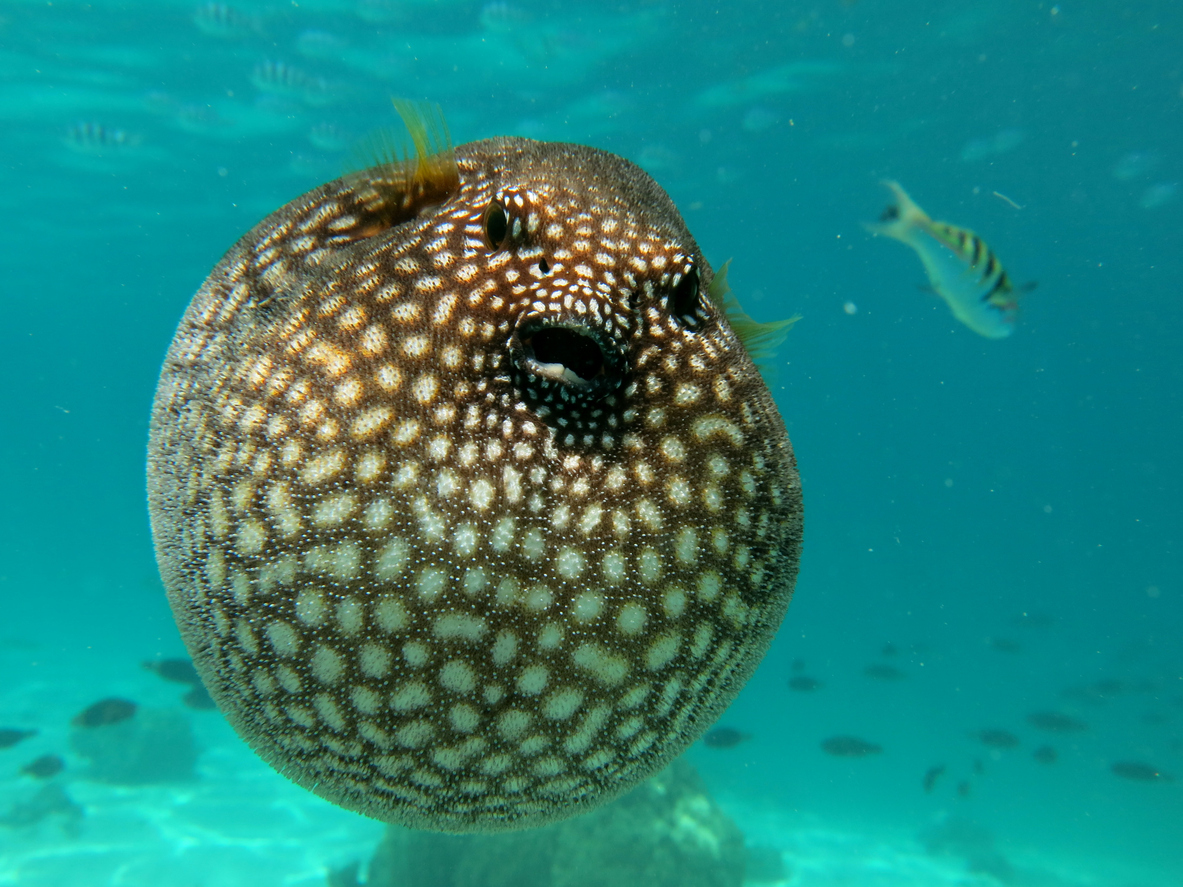
These aquatic drama queens can gulp water faster than you can say “deflate-gate,” ballooning to several times their size in seconds. Pufferfish take in water at a rate of two gulps per second, causing their stomach to stretch dramatically. This rapid inflation is rooted in an evolutionary adaptation of the coughing reflex, allowing them to transform from a tasty morsel into a major pain for predators.
But there’s more to these living beach balls than meets the eye. Pufferfish pack a potent neurotoxin called tetrodotoxin, making them even less appetizing. This toxin is up to 1,200 times more poisonous than cyanide, with a single pufferfish containing enough to kill 30 adult humans. Talk about a spiky surprise package that packs a punch!
2. Painted Tree Frog: The Noise-Cancelling Amphibian
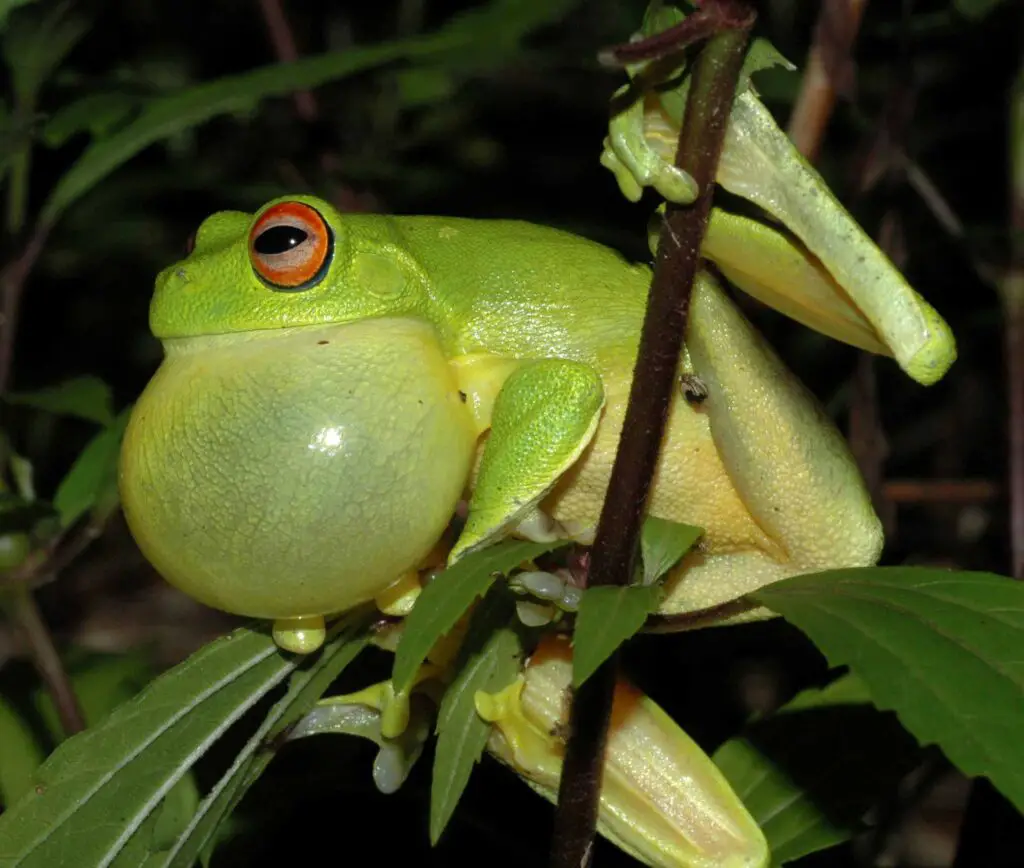
These colorful little divas inflate their lungs to tune out unwanted suitors. In 2021, scientists in Minnesota discovered that female green tree frogs inflate their lungs to cancel out the calls of rival species. It’s like having built-in noise-cancelling headphones, but instead of blocking out your chatty coworker, these frogs are filtering out the amphibian equivalent of bad pickup lines.
The exact mechanism causing this noise-cancelling effect is yet to be fully understood, but researchers believe it helps females locate males when multiple species congregate at breeding ponds. This unique adaptation gives new meaning to the phrase “selective hearing” and showcases how evolution has equipped these frogs with their own “Do Not Disturb” sign!
3. Greater Sage Grouse: The Avian Subwoofer
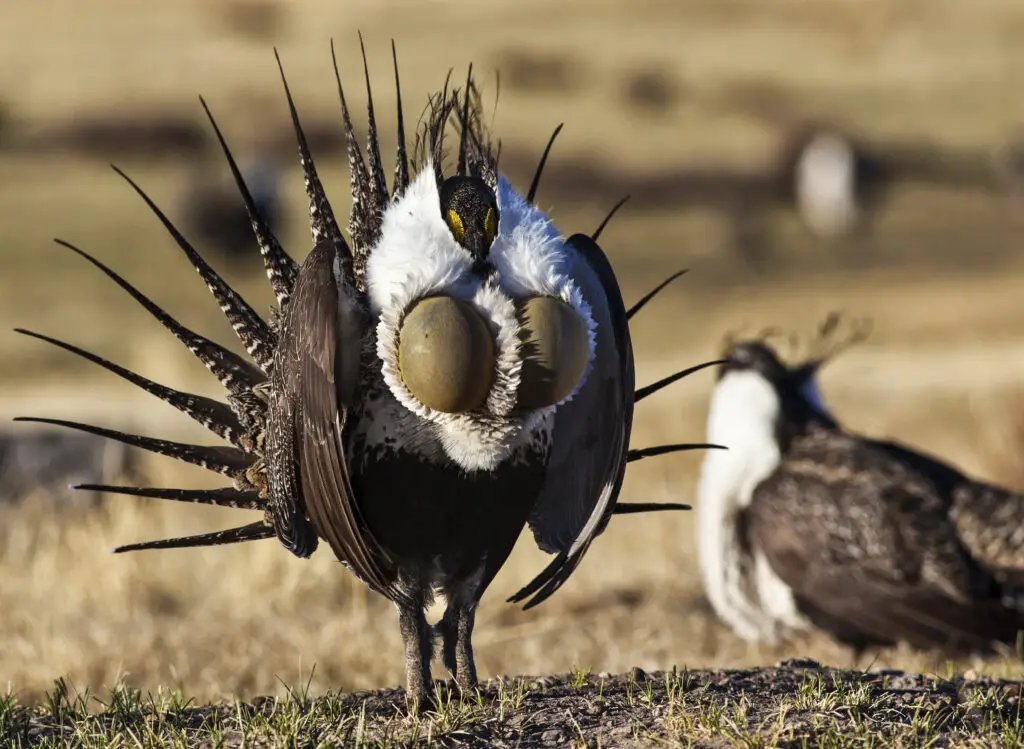
Male Greater Sage-grouse are essentially walking, feathered subwoofers. Their mating call starts with what sounds like swishing corduroys, followed by a gurgling chest sound, and ends with a boom that can be heard over a mile away. These birds inflate bright olive-green air sacs on the sides of their necks to produce these impressive sounds, creating nature’s version of a bass-heavy pickup line.
The Sage Grouse’s ability to produce such low-frequency sounds is due to their uniquely adapted syrinx and air sacs. A 2015 study in the journal PLOS ONE found that these birds can produce sounds as low as 15 Hz, well below the range of human hearing. This allows them to communicate over long distances in their open habitat, proving that in the bird world, the deeper the boom, the more attractive the groom!
4. Slender-Spined Porcupine Fish: The Underwater Pincushion
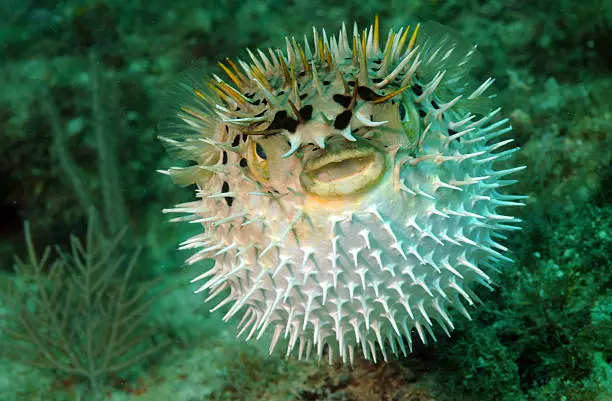
Imagine if you could instantly turn yourself into a beach ball covered in thumbtacks whenever you felt threatened. That’s essentially what these fish do. In just seconds, they transform from a slender fish into a floating spiky ball. This rapid inflation is made possible by their pleated stomachs, which can expand to hold up to 100 times their normal volume of water.
A study published in the Journal of Morphology revealed that Porcupine fish have lost many of the bones found in other fish, allowing for extreme body expansion. Their spines, normally lying flat, become erect during inflation, creating a formidable defense mechanism. It’s a pretty effective way to say “back off” in the underwater world, turning a potential snack into a painful mistake for any predator!
5. Frigatebirds: The Red-Ballooned Casanova
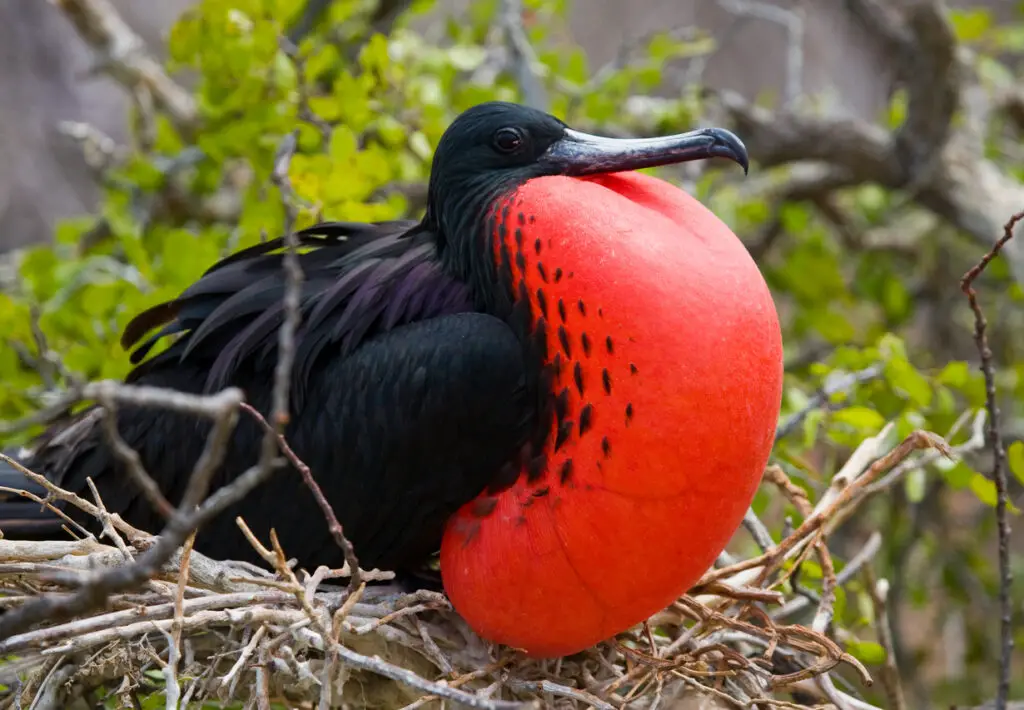
Male Frigatebirds inflate a bright red throat pouch during mating season, turning themselves into the avian equivalent of a cheesy pickup artist with an inflatable red suit. Over a period of almost half an hour, a male frigatebird will gradually inflate its gular pouch until it becomes a bright, red balloon almost half the size of the seabird.
This impressive display isn’t just for show. A 2017 study found that females prefer males with larger, redder pouches, suggesting that the display is an honest signal of male quality. The pouch’s size and color intensity correlate with the male’s health and genetic fitness. Somehow, it works for these birds, proving that in the animal kingdom, sometimes bigger really is better!
6. Cane Toads: The Inflatable Bouncers
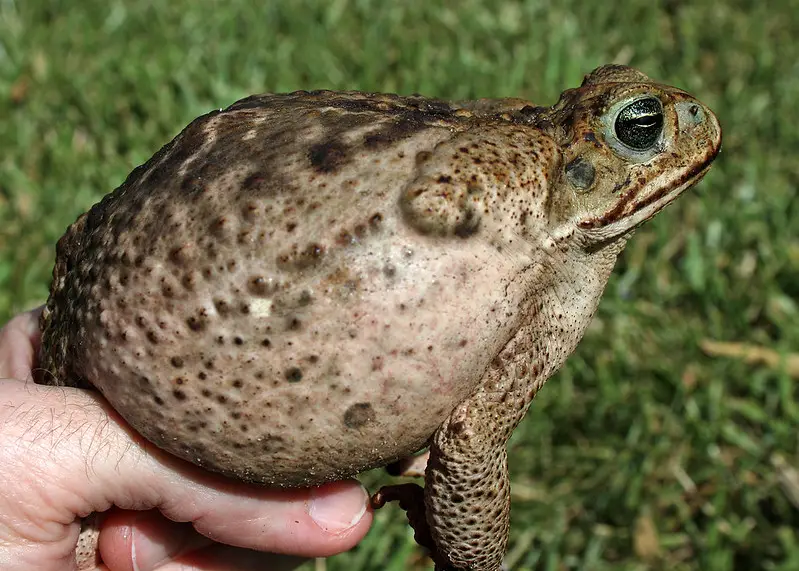
Female cane toads inflate to avoid unwanted mating attempts. While both sexes inflate to ward off predators, females utilize full-body inflation to prevent males from grasping them successfully. It’s like having a built-in bouncer for the amphibian dating scene. These toads take the phrase “sorry, I’m all puffed out” to a whole new level!
This unique behavior serves as a screening method for mate suitability. A study published in the journal Behavioral Ecology and Sociobiology found that only the strongest and most persistent males can successfully mate with an inflated female. This rigorous selection process contributes to the cane toad’s success as an invasive species, ensuring only the fittest genes are passed on. Who knew that in the toad world, playing hard to get meant literally inflating yourself like a balloon?
7. Siamang Gibbons: The Balloon-Throated Crooners
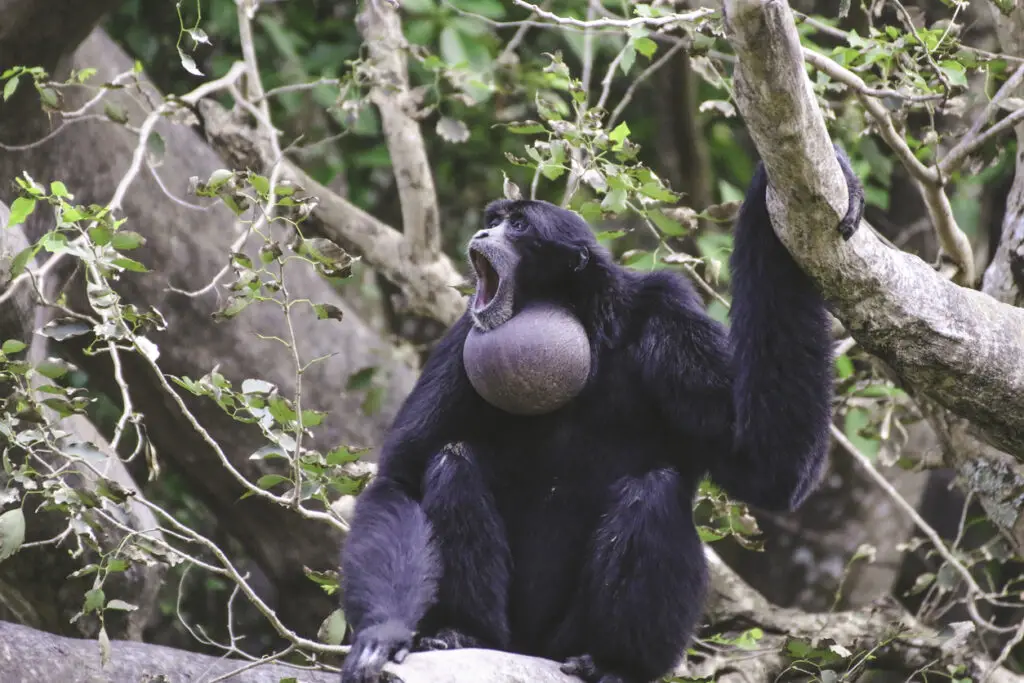
Siamang gibbons, the largest of the gibbon species, are nature’s own opera singers, complete with built-in amplifiers. These apes possess a remarkable adaptation: a grapefruit-sized throat sac that can inflate to the size of their head. This balloon-like pouch acts as a resonance chamber, allowing siamangs to produce calls that can carry for miles through dense jungle.
A study published in the American Journal of Primatology found that siamang duets, performed by mated pairs, can last up to 20 minutes and reach volumes of up to 110 decibels – as loud as a rock concert! The inflatable throat sac not only amplifies their calls but also allows them to produce a wide range of vocalizations, from low booms to high-pitched screams. It’s like nature’s version of Auto-Tune, helping these arboreal acrobats hit all the right notes in their forest concerts.
8. Arabian Camel: The Inflatable Casanova
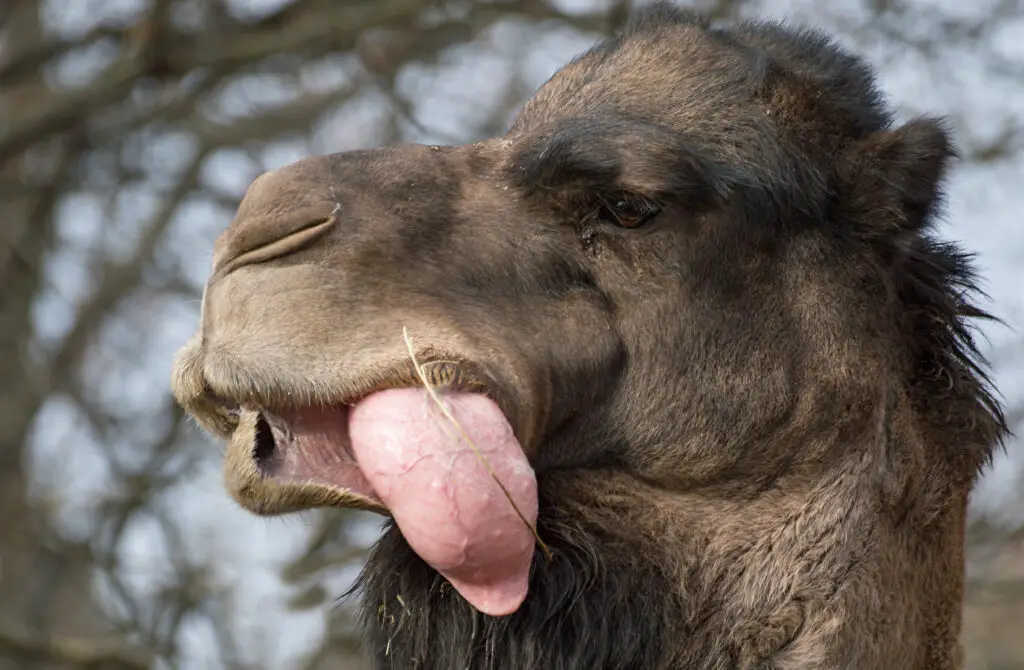
Male Arabian camels, also known as dromedaries, have a secret weapon in their dating arsenal: an inflatable soft palate called a dulaa. During mating season, these desert Casanovas can extrude their dulaa from the side of their mouth, inflating it into a large, pink bubble. This bizarre display is accompanied by frothing at the mouth and spraying urine, creating quite the sensory experience for potential mates.
A 2013 study in the Journal of Zoo and Wildlife Medicine found that the size and condition of a male camel’s dulaa correlate with his testosterone levels and overall health. The larger and more vibrant the dulaa, the more attractive the male is to females. This inflatable organ can reach sizes of up to 25 cm in length and 17 cm in width, turning these usually stoic ships of the desert into literal blabbermouths during mating season.
9. Hooded Seals: The Nasal Balloon Virtuosos
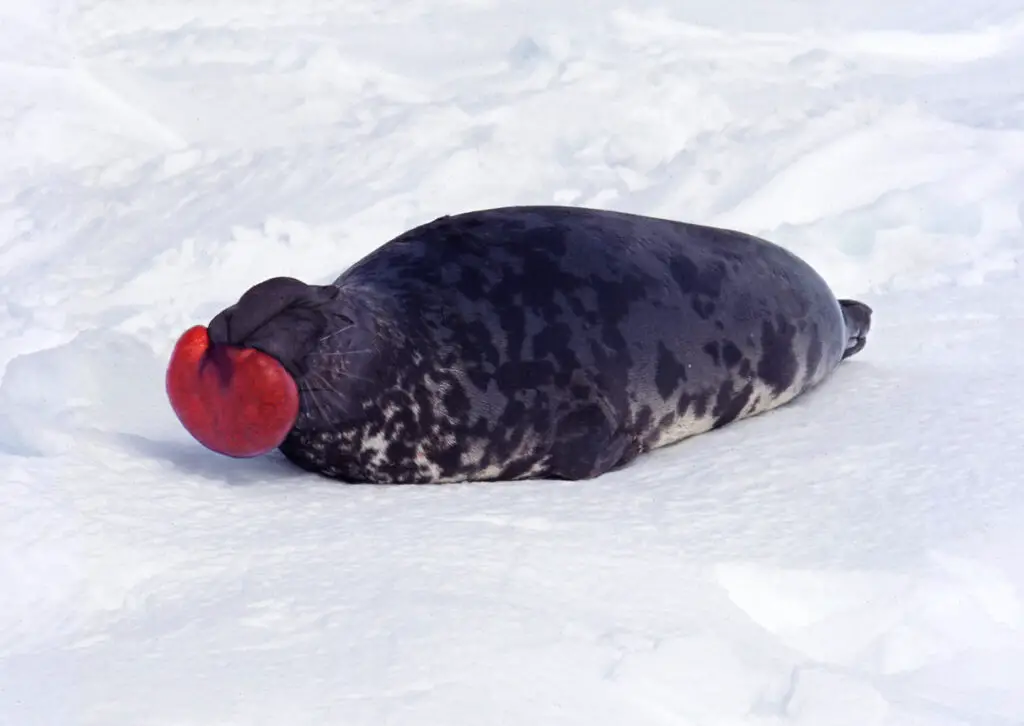
Imagine if your nose could suddenly inflate into a bright red balloon – that’s essentially what male hooded seals can do. These marine mammals have an inflatable nasal cavity they can blow up like a bright red balloon, turning their faces into nature’s party trick. It’s as if evolution decided to combine a clown’s balloon animal skills with a seal’s blubbery body.
This bizarre adaptation serves multiple purposes. A 2014 study in the journal Polar Biology found that males use their inflated nasal balloons in competitive displays with other males and to attract females. Underwater, the inflatable sac can be used to produce loud vocalizations. It’s like having a built-in sound system for underwater karaoke!
10. Greater Prairie Chickens: The Booming Ballroom Dancers
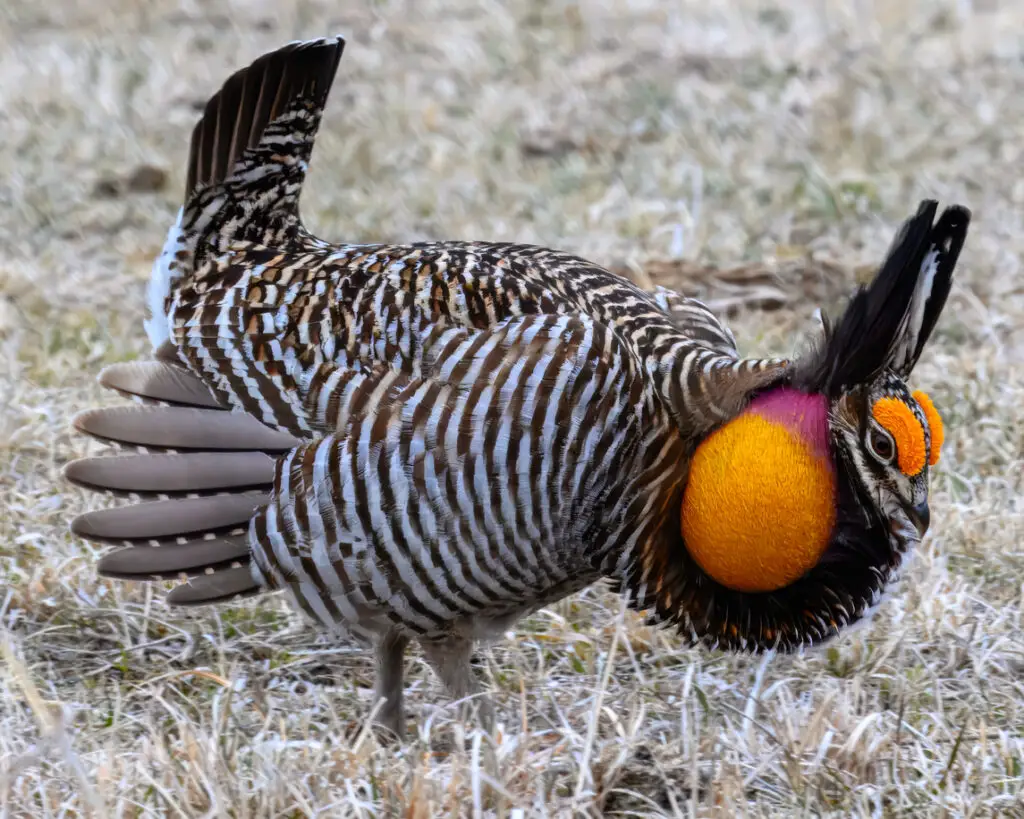
Male prairie chickens turn their mating ritual into a bizarre inflatable dance party. These feathered Casanovas inflate bright orange air sacs on the sides of their necks, creating a striking visual effect that would put any disco ball to shame. It’s as if they’re trying to impress potential mates with their best impression of a feathered lava lamp.
This elaborate dance and inflation display produces a deep, resonant “booming” sound that can be heard for miles across the prairie. A study in the journal The Auk found that females prefer males with longer and more frequent booming displays. It’s like a bird version of a dance-off, but with built-in sound effects!
So the next time you feel like you’re about to burst from stress, just remember: somewhere out there, a pufferfish is doing exactly that – and looking fabulous while doing it. These bizarre balloon animals prove that sometimes, it pays to be a bit of a blowhard!


